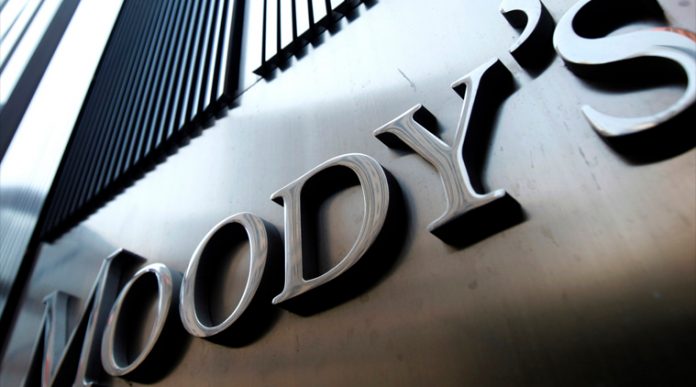KARACHI
The Moody’s Investors Service (Moody’s) has maintained a stable outlook of the Pakistani economy, affirming government of Pakistan’s B3 issuer and senior unsecured ratings.
According to Moody’s credit analysis, Pakistan’s medium-term growth outlook is strong, supported by the China-Pakistan Economic Corridor (CPEC) project to address critical infrastructure constraints, and the continued effects of macro-stability-enhancing reforms started under the International Monetary Fund (IMF)’s Extended Fund Facility (EFF) programme in 2013-16.
However, it added that the government’s debt burden was high, and fiscal deficits remained relatively wide, driven by a narrow revenue base that also restricts development spending.
In addition, foreign exchange reserve adequacy, albeit stronger than a few years ago, would still be vulnerable to any significant increase in imports.
Domestic politics and geo-political risk also continue to represent a significant constraint on the rating.
The decision to maintain a stable outlook on Pakistan’s B3 rating reflects broadly balanced risks related to these two sets of factors, it added.
Concurrently, Moody’s has affirmed the B3 foreign currency senior unsecured ratings for The Second Pakistan Int’l Sukuk Co. Ltd and the Third Pakistan International Sukuk Co Ltd.
Pakistan’s B3 local currency bond and deposit ceilings remain unchanged. The B2 foreign currency bond ceiling and the C1 foreign currency deposit ceiling are also unchanged.
These ceilings act as a cap on the ratings that can be assigned to the obligations of other entities domiciled in the country.
Moody’s says that the outlook for growth has strengthened as a result of increased macroeconomic stability due to reforms started during the three-year IMF EFF program and following the launch of the CPEC project in 2015.
In the fiscal year ended June 2016 (FY2016), real GDP growth reached 4.5pc, up from 4.1pc in both FY2015 and FY2014.
Moody’s expects such growth rates to be maintained or exceeded in the next few years. By contrast, the median rate of growth for B- rated sovereigns was just 2.7pc in 2016.
From a macroeconomic stability perspective, the IMF program succeeded in fostering fiscal deficit reduction, more rigorous inflation management and the rebuilding of foreign exchange reserves.
While further progress would be challenging, as fiscal metrics remain weak and reserve adequacy is relatively fragile, baseline assumption is that the steps that the authorities have taken in the last 3-4 years will not be reversed.
Continued government commitment to reform implementation will help to reinforce fiscal and monetary discipline, was preserving recent macroeconomic stability gains, the report added.
Moody’s expects that real GDP growth will rise towards 6pc over the next few years, as the economic benefits of the CPEC gradually materialize and past policy reforms continue to support economic potential.
The CPEC will increase Pakistan’s competitiveness and lift potential GDP growth by relieving supply-side constraints, particularly in power and transport infrastructure, and by catalyzing private sector investment, it claims.
However, security related issues and a weak track record of public project implementation suggest the pace of project execution will be relatively slow, as added by Moody’s.
Therefore, while the CPEC would support Pakistan’s credit profile, Moody’s expects the economic impact to materialize more slowly than the government envisions, resulting in real GDP growth closer to 5.5pc over the next two years, compared to government forecasts for 6.0 per cent growth in fiscal year 2018, rising to 7.0 per cent by fiscal year 2020.























